The Impact of Food Literacy on Your Health
Food literacy, the understanding of how our food choices impact our health and the environment, is an integral component of a sustainable lifestyle. It encompasses a wide variety of skills and knowledge, from understanding nutrition and food labels to making smart choices about food waste and sustainable food production practices.
The journey towards food literacy can begin at any age, but it is especially important to instill these principles in children. Schools can play a crucial role in this by including food literacy in their curriculum, teaching children not only about nutrition but also about where their food comes from. By learning about the journey of food from the farm to the table, children can develop an appreciation for the resources that go into producing food and become more mindful of their consumption habits.
But food literacy is not just for children. Adults too can benefit from understanding more about their food, particularly in today's age of processed foods and complex food labels. By educating ourselves, we can make more informed decisions about our diet and lifestyle, leading to better health and a more sustainable world.
Importance of Food Literacy for Health and Sustainability
Food literacy is not just about personal health, it also has significant implications for the planet. The choices we make about what we eat and how we get our food can have wide-ranging impacts on the environment.
For example, choosing to eat seasonal and locally grown produce can reduce the food miles and the carbon footprint associated with transporting food across long distances. Similarly, understanding how to read food labels can help consumers avoid highly processed foods, which often require more energy to produce and package.
Sustainable Eating and Food Literacy
Sustainable eating is a key aspect of food literacy. It involves making food choices that are not only good for your health but also for the environment. This includes choosing foods that are locally sourced, organically grown, and minimally processed. Consumers need to know where their food comes from, how it's produced, and what impact it has on the environment. They also need to understand how their diet can contribute to issues like climate change and deforestation. Sustainable eating requires a shift in mindset. It's not just about choosing the right foods, but also about reducing food waste, composting, and reusing leftovers. All these practices require a good understanding of food and its role in our lives and the environment.
Seasonal Eating and Its Benefits
Seasonal eating is another important aspect of food literacy. This involves consuming fruits and vegetables that are grown and harvested in the current season. Seasonal eating is beneficial for several reasons.
First, seasonal produce is often fresher and therefore tastier. Because it doesn't have to be transported over long distances, it can be harvested at peak ripeness. This not only enhances the flavor of the food but also its nutritional content.
Second, seasonal eating can support local farmers and contribute to the local economy. When we buy seasonal produce, we're supporting the people who grow our food and helping to maintain local farmland.
Mindful Eating: A Path to Healthier Lifestyle
Mindful eating, the practice of paying attention to the sensory experiences of eating, is another aspect of food literacy. It involves noticing the colors, smells, textures, and tastes of food, as well as listening to your body's hunger and fullness cues.
Mindful eating can help people develop a healthier relationship with food. It can reduce overeating, emotional eating, and the consumption of unhealthy foods. Moreover, by slowing down and savoring our food, we can derive more satisfaction from eating and improve our overall well-being.
In addition, mindful eating can contribute to sustainability. When we pay attention to our food, we're more likely to appreciate it and less likely to waste it. We might also become more aware of the resources that went into producing our food, leading us to make more sustainable choices in the future.
They have been eating this way in Europe for centuries. A meal is not meant to be wolfed down.
Food Access, Food Equity, and Their Role in Food Literacy
Food access and food equity are crucial components of food literacy. These concepts refer to the availability and affordability of healthy food for all people, regardless of their income or location. In many parts of the world, people lack access to fresh, nutritious food. This can be due to a lack of grocery stores in their area, high prices, or a lack of knowledge about healthy eating.
Food equity goes a step further, encompassing not just physical access to food but also the ability to make informed food choices. It involves ensuring that everyone has the knowledge and resources they need to make healthy and sustainable food choices. By promoting food literacy, we can address issues of food access and food equity. Education and knowledge can empower people to make healthier choices, even within their resource constraints.
Reading Food Labels: A Key Component to Food Literacy
Reading food labels is a critical skill in achieving food literacy. Food labels provide important information about the nutritional content of food, including calories, fat, sugar, and sodium levels. They can also give insights into whether a food product is organic, GMO-free, or contains allergens.
Unfortunately, food labels can often be confusing and misleading. It's not uncommon for food manufacturers to use vague or deceptive language to make their products seem healthier than they actually are. Learning how to read and understand food labels therefore, is an essential part of food literacy. It can help consumers make more informed choices about their food, leading to better health and more sustainable consumption habits.
Learning about Nutrition: An Essential Aspect of Food Literacy
Nutrition is a fundamental aspect of food literacy. Understanding nutrition involves knowing what nutrients are, why they're important, and where to find them in food. With the prevalence of diet-related diseases like obesity and diabetes, understanding nutrition has never been more important. Yet, many people lack basic knowledge about nutrition, making it difficult for them to make healthy food choices.
Nutrition is a fundamental aspect of food literacy. Understanding nutrition involves knowing what nutrients are, why they're important, and where to find them in food. With the prevalence of diet-related diseases like obesity and diabetes, understanding nutrition has never been more important. Yet, many people lack basic knowledge about nutrition, making it difficult for them to make healthy food choices.
Importance of Food Safety
Food safety is another vital aspect of food literacy. It involves understanding how to handle, store, and prepare food to prevent foodborne illnesses. Food safety is crucial for health. Foodborne illnesses can lead to serious health problems, from stomach upset to more severe conditions like kidney failure or death. Food safety is also important for sustainability. When food is not handled or stored properly, it can lead to waste. By understanding food safety, we can minimize waste and make the most of our food resources.
Culturally Appropriate Diets
Food literacy also involves understanding the cultural aspects of food. This includes acknowledging and respecting the dietary practices of different cultures.
Culturally appropriate diets can contribute to health and sustainability. Traditional diets often rely on local and seasonal foods, which can be more sustainable than diets reliant on imported or processed foods. Moreover, many traditional diets are balanced and nutritious, promoting health and well-being.
Learning to Garden or Farm
Learning to garden or farm is another way to improve food literacy. By growing our own food, we can gain a deeper understanding of the food system and develop an appreciation for the work that goes into producing food.
Growing your own food can also contribute to sustainability. Homegrown food doesn't require long-distance transportation or packaging, reducing its environmental impact. Moreover, by growing our own food, we can ensure its organic and free from harmful pesticides.
Controlling What You Eat
Food literacy gives us control over what we eat. When we understand our food - where it comes from, how it's produced, what it contains - we can make informed choices that align with our values and health goals. This control is crucial for both personal health and sustainability. By choosing healthier, more sustainable foods, we can improve our health and reduce our environmental impact. By controlling what we eat, we can influence the food system. Our food choices send a message to food producers and retailers about what we value. If we choose local, organic, and fair-trade foods, we can encourage more sustainable and ethical practices in the food industry.
As we face global challenges like climate change, obesity, and food insecurity, food literacy can provide the knowledge and tools we need to create a healthier, more sustainable future.





.png)
.png)
.png)

.png)